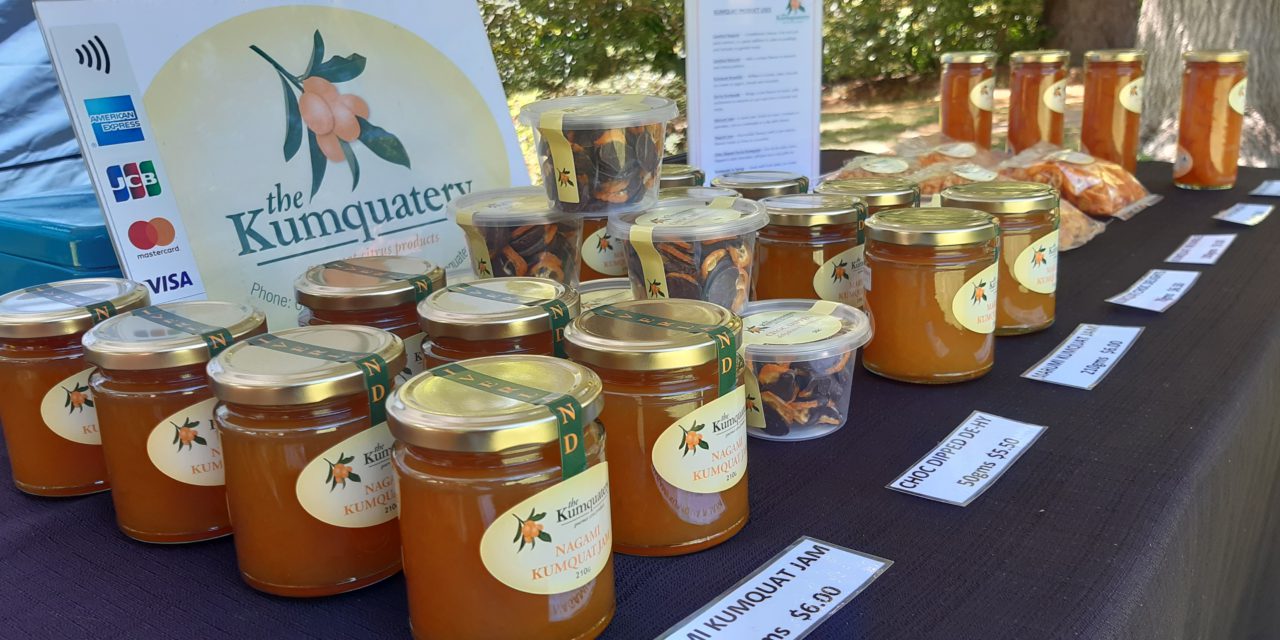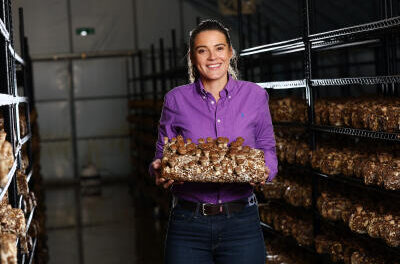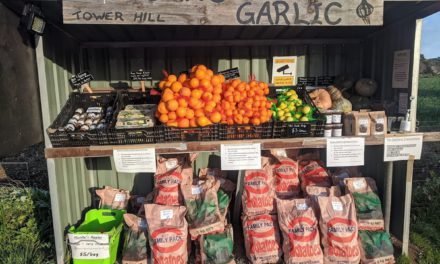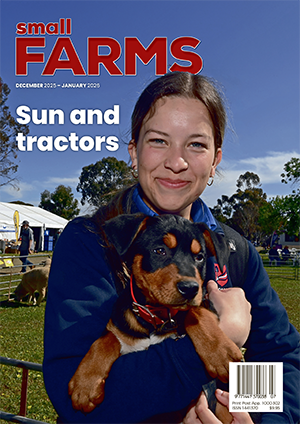One day it seemed like a good job, the next day it was a business, and when you want to move 500 trees from one orchard to another, clearly you are pretty keen about getting into the kumquat industry and all the curiosities the come with this not-always-well-understood little fruit.
No, it’s not a kum-what? It’s a kumquat! And yes, it really is spelled with a ‘k’.
Quite simply the original little kumquat (or cumquat in Australian English), according to Encyclopaedia Britannica, is from Fortunella, a genus of evergreen shrubs or trees of the family Rutaceae, grown for their tart orange fruits.
Asian in origin, global in appreciation, the tartness of the kumquat still remains an acquired taste, often influenced by which variety is used and how it has been processed.
And tucked away at Renmark, in South Australia’s Riverland, Andrew and Patria Kohler’s Kumquatery is a delightful blend of small farm meets big thinking as far as their sheer variety of kumquat alternatives go.
If you have seen the movie Forrest Gump and listened to what kan be done with shrimp, you might be getting klose to what the Kohlers kan do with kumquats (if you haven’t seen the movie — and we recommend you do — take it from us that it means many, many alternatives).
And please, let’s not harp on about the spelling. Because no, the Kohlers did not add their K to unseat the cumquat. It really and truly is spelled with a ‘k’. Meanwhile, back in downtown Renmark, the Kohlers have 500 trees in their orchard, growing the two main varieties of the fruit. Patria says each one komes with its own distinctive flavour.
They are Nagami, a small, oval-shaped fruit she says is tangy sweet, and Marumi, also small but with a round shape and a sweet rind.
She says once picked, the kumquats are processed into a range of tasty kumquat products, which include (and here we go):
- Kandied nagami
- Kandied marumi
- Kumquat krumble
- Naturally dehydrated kumquats
- Kumquats in syrup
- Kumquat syrup
- Nagami kumquat jam
- Marumi kumquat jam
- Kumquat dark chocolates
- Choc dipped de-hy kumquats
- Fresh kumquats (in season)
Space says we have to stop there, but we’re pretty sure you are now getting the picture. The spread becomes exponential when you add in the recipes for things you can do with your kumquats.
You kan immerse yourself in kumquat knowledge by dropping in to the property, where the Kohlers will happily demonstrate how their products kan be used in an array of kooking, tasting platters, baking or just enjoyed on their own.
The Kohlers also welcome tours and tastings by appointment to sample the Kumquatery range of products, so why not get a bunch of mates together and make it a date (they don’t sell those, just kumquats).
Andrew says the family became kumquat herders by osmosis. One minute the kouple was working for the business’ previous owners and the next thing they were retiring and the Kohlers decided to buy it all, pack it up and move it to their own piece of rural Riverland.
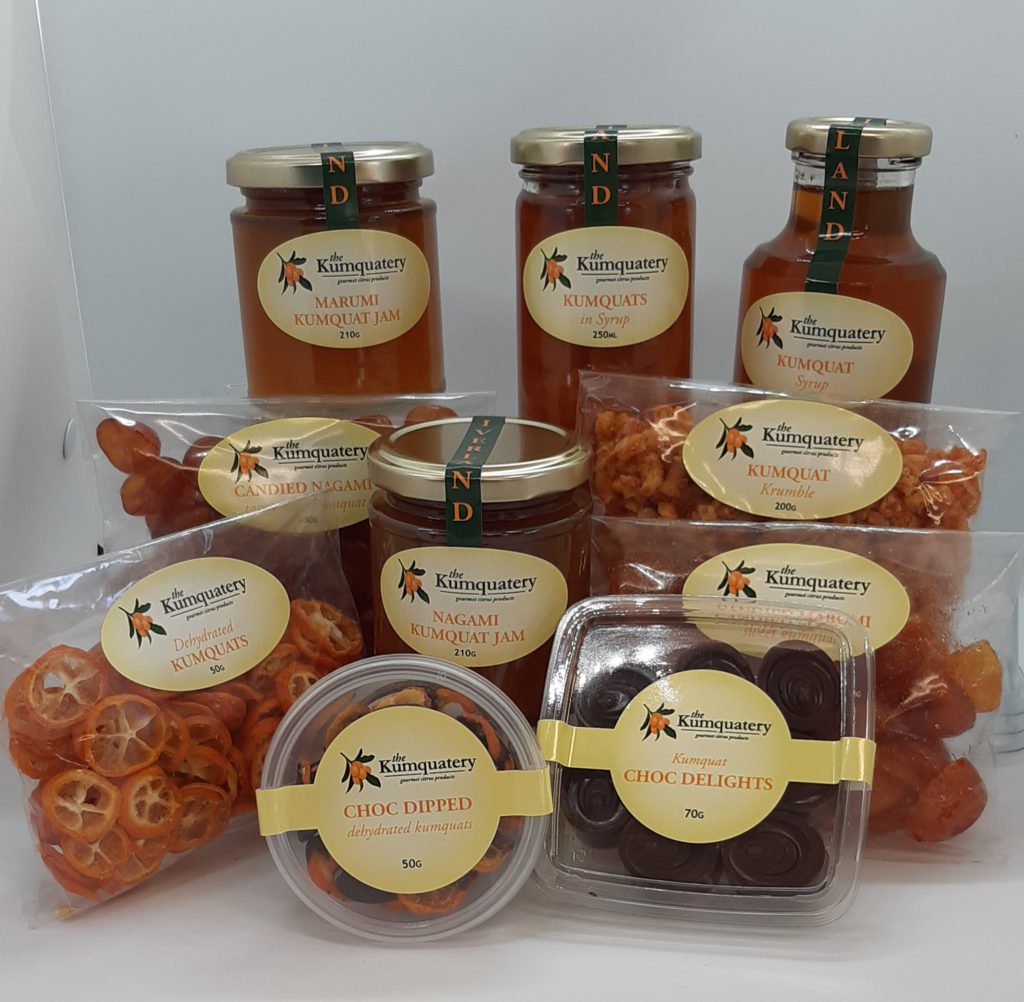
The range of products is extensive.
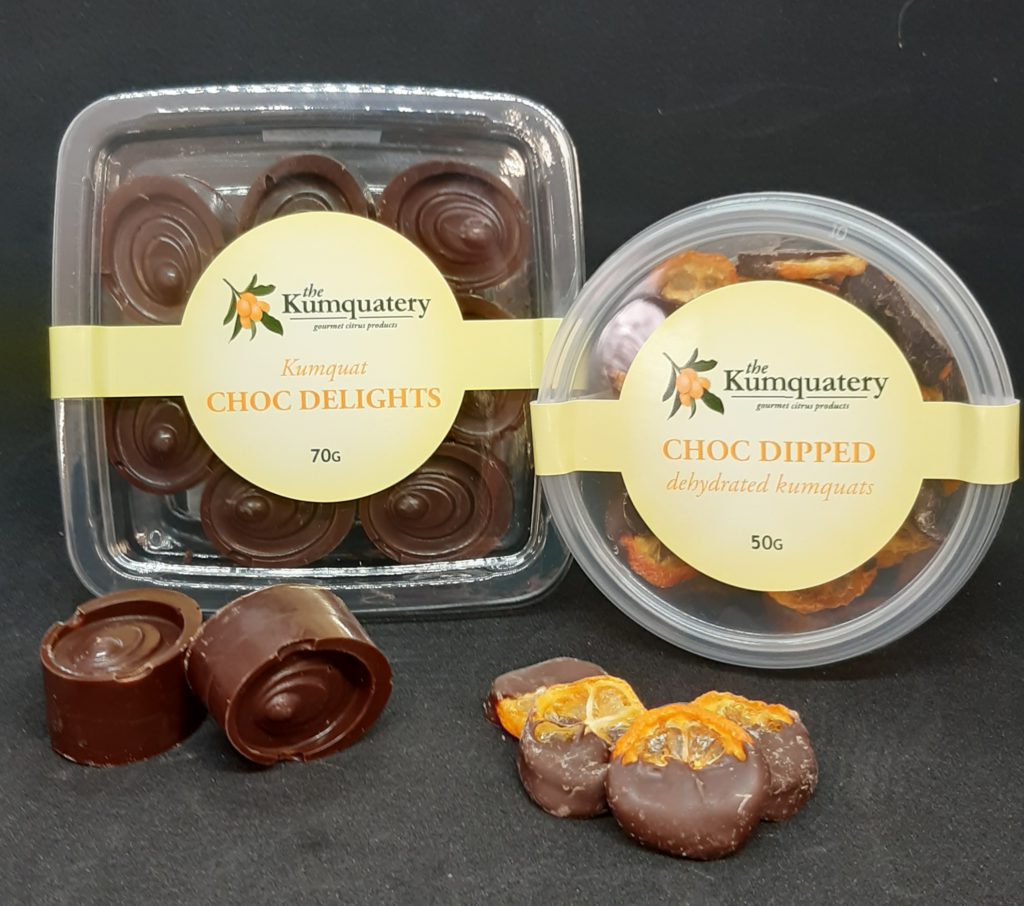
Chocolate and kumquat is a delicious blend of flavours.
Good luck to the next buyer.
“We also took it a step further when we built a kommercial kitchen at the same time, to kope with our plans to process and produce a range of products,” he added.
Andrew has a horticultural and hospitality background, while Patria has more of a marketing and retail bent which is a perfect fit for kumquat enterprises circa 2021 because Andrew also works on another farm and Patria and a friend have another business in town — and both husband and wife konfess they like to be busy.
Busy? Bloody hell.
A quick squizz at the kalendar certainly quantifies busy.
When he’s not an orchardist, Andrew is a dryland farmer. When she’s not an orchardist and kitchen hand, Patria runs a gift box business, specialising in local produce. They are also running two kids (Steven and Jorja) who used to be a big help around the place until they reached their teens and discovered doing stuff with the oldies does not register on the kool chart.
So it goes like this: July to November is kumquat harvest (by hand), November to December is harvest on the dryland farm, November to December is flat out in the gift box trade, January (if the truth is being told) is relatively quiet, February to July is keeping the orchard in shape, doing maintenance, repairs, pruning, fertilising and fighting frosts, and January to December is kooking, packaging, posting, kreating new recipes, handling kustomer queries and running the social media sites to keep the kustomers koming. Then there are the weekends (you thought we had forgotten those, didn’t you?) and the farmers’ markets. The Kumquatery krowd try not to miss Mt Pleasant, the Riverland and Adelaide markets, and when KOVID-19 isn’t killing it off, the Kohlers take their kumquats to the Adelaide Royal.
Patria says she is happy with the split, with Andrew in the orchard and her in the kitchen and on the komputer. By the time harvest is over, Patria has about two tonnes of kumquats to cook, process, package and get to markets, online kustomers, drop-ins and her shop in town.
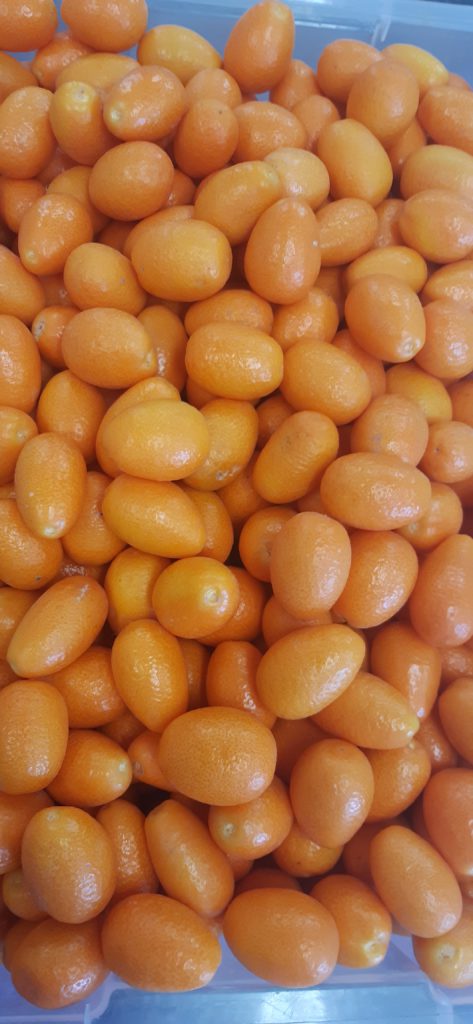
The two main varieties of kumquats grown by Andrew and Patria Kohler are Nagami, small, oval-shaped and tangy sweet, and Marumi, which are also small but round with a sweet rind.
Overarching that is the fresh fruit market – in 2020 that involved 600kg of fresh kumquats but the much shorter 2021 fresh fruit season kut that back to around 350kg. Doesn’t sound a lot, but you go weigh out just 1kg and see how many of the little kritters that involves. Also, they take a lot of time to harvest because they cannot be pulled straight from the tree, they need to be snipped off with some stem attached to nourish them through the next few days.
“During harvest you kan manage 20-30kg a day, depending on how much fruit you want to earmark for the fresh trade; every little snip takes time, but if you don’t do it the top of each fruit will tear — and the stem prolongs shelf life for the fruit,” Andrew said.
“The fresh fruit goes mainly to the general public, but in recent years we have noticed an increased interest from kraft and boutique distillers making small batch gin looking for a new taste,” he said. “We also have some chefs who value the zing kumquats can give their recipes.”
Being a kumquat grower also requires patience. It takes as many as six years for a tree to be seriously kommercial, although they may start producing a very small fruit at two or three years. But once they hit top speed they are good to go for the next 50 years.
“The biggest problem,” Andrew revealed, “is getting your fertiliser right, even though you are applying it directly around the tree itself — and we are also starting to use a bit of fertigation. You really need to be assessing it all the time.
“Frost is the other big challenge for us as it can really impact fruit. The trees themselves kan kope but it really knocks the fruit around so we do run frost sprinklers, but haven’t splashed out for frost fans at this stage because we’re not quite big enough.
“At the other end of the scale, fruit can also get sun bleached, and any that do don’t make the fresh kategory and go straight into the kitchen.”
Andrew said when the trees were planted, he deliberately kept them klose together, barely filling an acre, and he maintains the grounds with a hand mower.
He said having them so klose also meant they kompeted with each other, which helped keep the tree size down.
“We like the smaller tree. When you are hand harvesting a ladder is a nuisance — and a risk — so we try to stay under 2m although some have got a little bit higher,” Andrew said.
“Once they do get to the 2m mark we tend to hedge them (as Patria chimes in to expand the logic: “I’m short”).”
Patria says while everything looks to be in its right place, the Kohlers rarely stop thinking about what they kan do next.
“You always have thoughts, even if you don’t always pursue them, but a million things do kross your mind, so we are always tweaking a little,” she said.
“Tree-wise we are okay, the trees will keep producing more each season, but it never hurts to have something in the pipeline.”
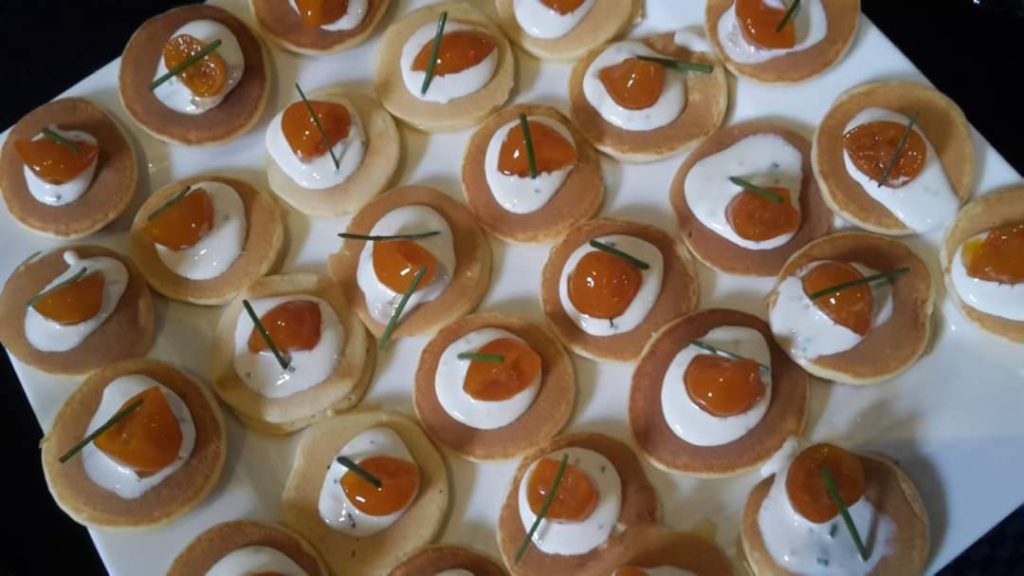
Chefs enjoy the extra zing kumquats bring to dishes.

